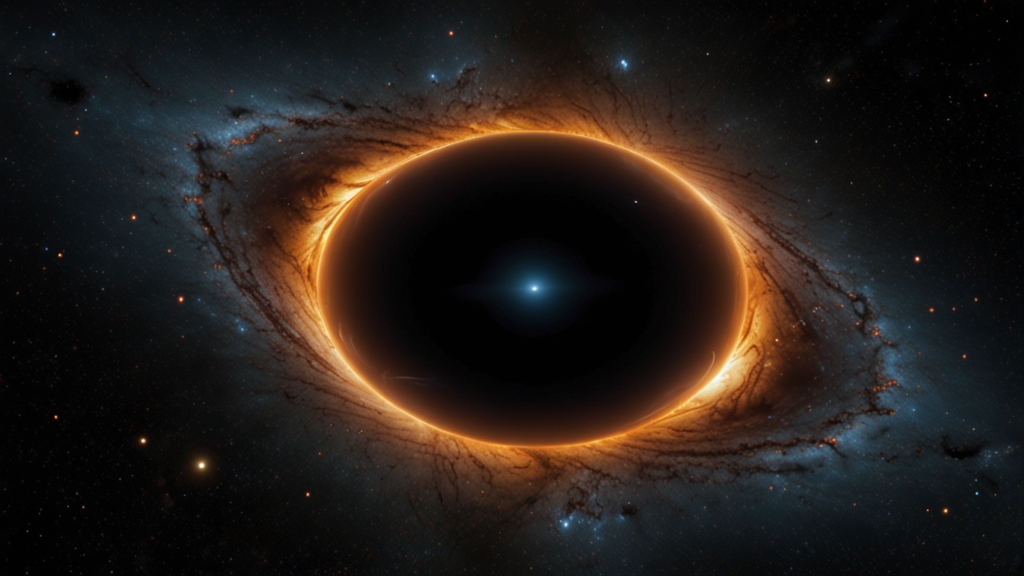The Mystery of Black Holes: Chemistry's Role in Understanding the Universe
Black holes have long captivated the imagination of both scientists and laypeople alike. These enigmatic regions of spacetime, from which nothing can escape, offer a wealth of mysteries waiting to be unraveled. While physics often takes the center stage in black hole research, chemistry also plays a crucial but less obvious role. This integration of disciplines advances our understanding of the universe and sheds light on the intricate workings of black holes.
Astrophysical Chemistry: Bridging the Gap
Astrophysical chemistry, or astrochemistry, is the study of the chemical elements and interactions in space. This interdisciplinary field bridges the gap between astronomical observations and chemical principles, enabling scientists to interpret the complex phenomena they observe. In the context of black holes, astrochemistry helps elucidate the properties of the matter surrounding these celestial objects.
The extreme conditions near black holes — such as immense gravitational forces and high-energy radiation — affect molecular interactions in unique ways. By understanding these chemical processes, researchers gain insight into the behavior of accretion disks, the regions of matter spiraling into black holes. These disks emit light across various wavelengths, providing astronomers with valuable data. Advanced spectroscopic techniques allow scientists to analyze this light, identifying the elements and molecules present, thereby informing models of black hole behavior.
Spectroscopy and Elemental Analysis
Spectroscopy serves as a vital tool in black hole studies. By examining the spectral lines in the light emitted from the vicinity of black holes, scientists can determine the chemical composition of accretion disks and the jets of particles ejected from these regions. For instance, the presence of specific elements like hydrogen, helium, and heavier metals can indicate the types of stars that were pulled into the black hole.
“Spectroscopy is like a fingerprint for the cosmos, revealing hidden truths about the composition and physical conditions of celestial objects.”
Additionally, the study of X-ray and gamma-ray emissions from black holes provides clues about the high-energy processes occurring in and around these enigmatic objects. Chemical reactions under such extreme conditions can produce exotic states of matter, enriching our understanding of both chemistry and astrophysics.
Quantum Chemistry and General Relativity
The interplay between quantum chemistry and general relativity is another fascinating aspect of black hole research. While Einstein's theory of general relativity describes the gravitational influence of black holes, quantum mechanics governs the behavior of particles on a subatomic level. Quantum chemistry helps bridge these two realms, particularly in examining the behavior of particles in the presence of intense gravitational fields.
One area of significant interest is Hawking radiation, a theoretical prediction that black holes can emit radiation due to quantum effects near their event horizons. This phenomenon suggests that black holes can slowly lose mass and eventually evaporate. Understanding the chemical interactions involved in Hawking radiation could pave the way for groundbreaking discoveries, potentially even linking gravity with quantum mechanics.
“The synergy of quantum chemistry and general relativity opens new avenues for exploring phenomena like Hawking radiation, shedding light on the smallest and largest scales of the universe.”
Black Holes and the Chemical Evolution of the Universe
Black holes also play a pivotal role in the chemical evolution of the universe. As massive stars collapse to form black holes, they undergo supernova explosions that scatter heavy elements into space. These elements, such as carbon, oxygen, and iron, are fundamental building blocks for planets and life. By studying the remnants of these cosmic events, scientists can trace the origins and distribution of essential elements, offering insights into the chemical enrichment of galaxies.
Moreover, the powerful jets emitted by supermassive black holes in the centers of galaxies can influence star formation and the distribution of matter within galactic clusters. These jets often contain relativistic particles and magnetic fields that can interact with the interstellar medium, affecting the chemical composition and dynamics of the surrounding space.
Conclusion
While black holes are often associated with the realms of physics and astronomy, chemistry plays an indispensable role in unraveling their mysteries. From analyzing the spectral signatures of accretion disks to exploring the quantum chemistry of phenomena like Hawking radiation, the contributions of chemistry are profound and far-reaching. As we continue to probe the depths of the universe, the interdisciplinary collaboration between chemists, physicists, and astronomers will undoubtedly yield new insights into the enigmatic nature of black holes, ultimately enriching our understanding of the cosmos.











